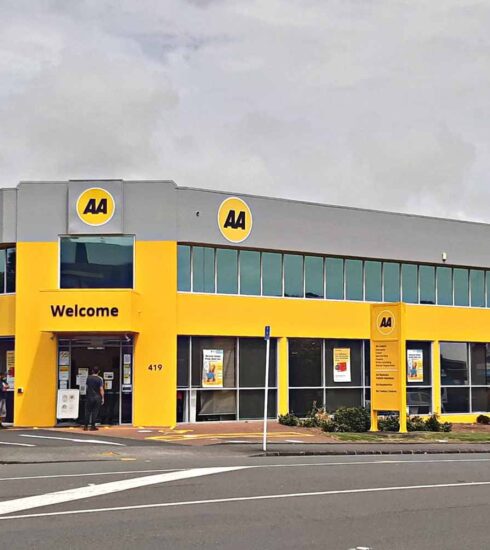Von Tempsky or bust
On a sunny Sunday morning in 1864, Captain Gustavus Ferdinand von Tempsky, accompanied by the Forest Rangers No. 2 Company, arrived at the small settlement of Rangiaowhia, just outside of modern day Te Awamutu. Von Tempsky’s ‘blood was up’ – in the midst of the Waikato Wars, emboldened by their battle a week prior at Mangapiko River which saw around 40 Māori killed, and jealous of reports that the No. 1 Company had slaughtered seven Māori in prayer a few months earlier at Paparata, his troops pushed down in to the valley behind St John’s Anglican church. In the small village, they were met with a group of non-combatant women, children, and elderly men, taking shelter from the onslaught of British troops through their ancestral lands.

L. A. Wilson
Just a week earlier, the Bishop of New Zealand pleaded with the Crown to make sure those who sought safety and refuge at Rangiaowhia “were left unmolested.” Instead, early on the morning of the sabbath, the No. 2 Company rushed the quiet village. Some estimates say that more than 100 defenceless men, women and children were mercilessly slaughtered. It is said that an elderly man held a white blanket above his head and begged for mercy in the front door of a burning whare before being shot at point blank range, the fire inside killing the young boy and his whānau.
The battle at Rangiaowhia is still believed to be the most horrific war crime taken against Māori in Aotearoa, with historians redesignating the Forest Rangers’ actions from an ‘act of war’ to plain, cold blooded murder. But this historical revision came long after when, in September 1906, the Hamilton Borough Council decided to honour ‘the hero of the Waikato War,’ Captain Gustavus Ferdinand von Tempsky, with a street sign on a small road running parallel to the Waikato River.

Council Chambers 1961 – Hamilton City Libraries Heritage Collection
On an overcast morning, 158 long years later – after 1.2 million hectares of Māori land was confiscated as a direct result of the Waikato Wars – the Hamilton City Council sat in their wood-panelled chambers, ready to take their final vote to rename the contentious street. While the majority of Council members were in support of the change, with Councillor Angela O’Leary calling the late Captain a ‘bastard of a human being,‘ others were cautious, unconvinced.
Councillor Ewan Wilson expressed that ‘cancelling’ Von Tempsky Street was ‘too divisive,’ while Councillor Geoff Taylor noted he was ‘frankly tired’ of people talking about white supremacy and privilege, and we should all just ‘move on.’ And all the while, tangata whenua sat in the corner of Council Chambers, listening to Kirikiriroa’s elected representatives tell them how they should feel about their own history.
Also in the corner of the room sat local pharmacist Ian McMichael, who believed that his work over the past two years on the name change application had met the requirements under Hamilton City Councils’ Naming of Roads, Open Spaces and Council Facilities Policy – namely, that over 90% of the property owners agreed with the proposed change, there were issues of cultural sensitivity, and there was a demonstrated community desire. Much like those present in the room, there were a few on Von Tempsky Street that didn’t approve of the name change – but Ian’s application, litigiously filled out as only a pharmacist could, was sound.
And in that application now sitting on the desks of the elected Council members, before the pages of scribbled signatures from over 90% of the residents of Von Tempsky Street, before Dr Vincent O’Malley’s Historical Report on Hamilton Street and City Names, and addressed to Whom It May Concern, Ian wrote:
‘The time when these roads were named was a time of colonisation. The colonisation culture was about individualism, autocracy, humanity against nature, patriarchy, intercultural and inter religious intolerance, conflict resolution through confrontation, reliance on defence.’
But Ian, along with a growing percentage of Kirikiriroa-Hamilton’s population, believed that times had changed. And so too did a majority of Council – after two years of completing and submitting documents, the elected members of Hamilton City Council voted 10-3 to change the name of Von Tempksy Street.

Zelda A. Paul / Te Whare Taonga o Waikato
82 years after the brutal attack on Rangiowhia, a fine arts student named Zelda A. Paul was paid £10 for her diazo blue print with gilt and watercolour that then became the Hamilton City Council Coat of Arms. It was only a year earlier that the newly renamed Hamilton had officially become a city, and a census a decade prior found that less than 200 Māori remained in the area following Von Tempsky’s campaign throughout the Waikato. Atop the newly adopted crest sat a crown, said to represent Hamilton’s beginnings as a military post during the time of Rangiaowhia. And to this day, a version of the crest sits in the Council chambers, directly above the Mayor’s seat.
But, if a local pharmacist was able to change the name of a street – why can’t a former Miss New Zealand finalist change Hamilton’s emblem?
“This is a spiritual calling,” says Jahvaya Wheki, organiser of the petition to change Hamilton’s emblem. I feel called to do this. This isn’t something I feel that Jahvaya would usually care about.”
After spending time volunteering at the Waiwhakareke Heritage Park at Hamilton’s northernmost boundary, Jahvaya Wheki began to grieve the area’s changing landscape – bulldozers, trucks, and workers ready to turn the surrounding farmland in to a new subdivision. After giving a personal farewell to the whenua, a truck knocked down a power pole, trapping her in, and she felt a calling to fight for the land.
“All of a sudden I became activated,” she said. “And that’s when I went in to Council and came across the Hamilton City crest that was hanging in the foyer there. And because of my own journey, I started to see the disconnection in the emblem instantly, almost instantly. I asked one of the employees once I landed eyes on the crest, ‘what does this mean?’ And they couldn’t even tell me.”
After a meeting with Hamilton’s mayor Paula Southgate regarding the developments around Waiwhakareke Heritage Park, Jahvaya was encouraged to make a submission regarding the crest through He Pou Manawa Ora, Hamilton City Council’s partnership strategy with local iwi.
“It’s painful for our people, for tangata whenua. We need restorative justice, honouring the mana of the land, Kirikiriroa. From doing my campaign about updating the Hamilton city crest, I had to come to a point of somewhat accepting that even though [our history] is so painful, that it is what happened,” says Jahvaya. “It is a part of our history. And it’s up to us to co-create and co-design how we would like to move forward together as a city.”

Hamilton City Libraries Heritage Collection
Kirikiriroa-Hamilton’s colonial history doesn’t stop at an emblem or a street sign, though. If you take a left off Von Tempsky / Putikitiki Street, you’ll find yourself on the vibrant, albeit gentrified Grey Street – the namesake of another ‘hero’ frozen in time. Immediately following his father’s death in one of the bloodiest battles in the Napoleonic Wars, Sir George Grey was born in Libson, Portugal in 1812 – and 51 years later, on a small Pacific island at the bottom of the world, Grey issued what may have been the most consequential ultimatum of his life: “All Persons of the Native Race living in Waikato are hereby required immediately to take the Oath of Allegiance to the Queen, or they will be ejected.’
And so, from George Grey’s pen, he set in motion the events that would eventually lead to the war crimes committed by the No. 2 Company in Rangiaowhia. While Grey justified the subsequent invasion and slaughter by British troops by claiming Māori were planning to invade Auckland, historians have since described his motivations as ‘a deliberate and transparent falsehood’ – little more than a land grab by heavily armed forces.
And still, Grey Street isn’t the only contentious relic still left from a bygone era – Bryce Street still lies across the top of Hamilton’s abandoned underground railway station, and the Captain Hamilton statue, nose chipped from the swing of a claw hammer, is still hidden away in an undisclosed location after threats to tear it down during 2020s Black Lives Matter protests.
And of course, there are, and will continue to be, those who disagree with the Von Tempsky Street name change, the removal of the Captain Hamilton statue – ‘erasing history,’ they often say. Sharing a side with those who voted against the Von Tempsky Street name change in the Hamilton City Council meeting, Winston Peters was “disgusted” at the removal of the statue of the man who had never set foot in Hamilton. National MP Simeon Brown told RNZ that he believed “tearing down artefacts or statues of people we dislike based on our values now is an incredibly immature response.” But still, it certainly isn’t without precedent – in 1945, when the German occupied town of Treuburg became the once again Polish town of Olecko, Adolf-Hitler-Platz was renamed plac Wolności – or, in English, Freedom Square.

Michael Bradley / AFP via Getty Images
And now, despite Hamilton’s reputation as a ‘cow town,’ attitudes are shifting. Street names are changing. Statues are being removed. Renewed calls are being made to restore Kirikiriroa as an official name. Those who are undeserving of honour are being honoured no more. And though there will always be those few who stand against progress, it seems for now that the Council is on board.
“I’m aware of the historic offence caused by a number of street names, and I’m also aware of conflicting views on this issue,” Hamilton’s mayor, Paula Southgate, said. “Council has already committed to a process through the development of He Pou Manawa Ora to address cultural offence. This will involve working with Iwi and the community to develop a much better understanding and consider a way forward.”
“I have always said we need some bold and brave conversations about this,” says Paula Southgate. “And I am committed to that.”

Benjamin Wilson / Te Awamutu News
Toward the end of Ian’s ultimately successful application to the Hamilton City Council, he typed:
‘We now live in a spaceship culture. We are all this spaceship together. This needs to be a time of interdependence, democracy, humanity part of nature, sustainable production and consumption, gender equality, intercultural and inter religious tolerance, conflict resolution through negotiation, reliance on security.’
‘By renaming this street, Council will be sending a message to children of all cultures, but especially Māori, that you are honoured, you are respected, and that we live in this spaceship called earth. All together.’




